BBQ FOR ALL  BBQ FOR ALL year-round outdoor cooking for vegetarians, vegans, pescatarians & meat-eaters
BBQ FOR ALL year-round outdoor cooking for vegetarians, vegans, pescatarians & meat-eaters  marcus bawdon
marcus bawdon  Designer Geoff Borin Food Photography & Styling Marcus Bawdon Editor Kate Reeves-Brown Editorial Director Julia Charles Head of Production Patricia Harrington Art Director Sally Powell Creative Director Leslie Harrington Indexer Vanessa Bird Published in 2023 by Dog n Bone Books An imprint of Ryland Peters & Small Ltd
Designer Geoff Borin Food Photography & Styling Marcus Bawdon Editor Kate Reeves-Brown Editorial Director Julia Charles Head of Production Patricia Harrington Art Director Sally Powell Creative Director Leslie Harrington Indexer Vanessa Bird Published in 2023 by Dog n Bone Books An imprint of Ryland Peters & Small Ltd
| 2021 Jockeys Fields | 341 E 116th St, |
| London WC1R 4BW | New York NY 10029 |
www.rylandpeters.com 10 9 8 7 6 5 4 3 2 1 Text Marcus Bawdon 2023. Design & commissioned photography Dog n Bone Books 2023. ISBN: 978 1 912983 64 3 E-ISBN: 978 1 912983 70 4 The authors moral rights have been asserted. All rights reserved. No part of this publication may be reproduced, stored in a retrieval system or transmitted in any form or by any means, electronic, mechanical, photocopying or otherwise, without the prior permission of the publisher. A CIP record for this book is available from the British Library.
US Library of Congress cataloging-in-publication data has been applied for. Printed and bound in China. Notes Both metric and imperial/US cups are included. Work with one set of measurements only and do not alternate between the two within a recipe. All spoon measurements given are level: 1 teaspoon/tsp = 5 ml; 1 tablespoon/tbsp = 15 ml. FOOD SAFETY Keep raw meat, poultry, fish and their juices away from other food.
After cutting raw meats, wash cutting boards, utensils and countertops with hot, soapy water. Cutting boards, utensils and countertops can be sanitized by using a solution of 1 tbsp of unscented, liquid chlorine bleach in 4.5 litres/1 gallon of water. TAKE CARE Whenever you are cooking with live fire, remember that any nearby surfaces will get hot, sparks can fly, and hot liquid and fat may spill onto your skin. Always have a first-aid kit, as well as a fire extinguisher and fire blanket, close to where you are cooking. Always supervise children near a barbecue or fire. 
 CONTENTS INTRODUCTION For me, everything tastes better cooked outdoors over fire...
CONTENTS INTRODUCTION For me, everything tastes better cooked outdoors over fire...
Cooking outdoors shouldnt always be about huge slabs of meat. There is a really wonderful variety of tasty food that can be cooked over fire, all of which tastes the better for it. For me, barbecue and cooking outdoors should be tempting and exciting, whatever your food choices. More and more people are choosing meat- free and plant-based lifestyles, and this book is an inspiration for you to pull together a real feast that will allow you to feel confident in wowing your friends and family, whatever their dietary needs. All too often at barbecues, if anyone has any dietary requirements they end up with a pretty poor choice of foods, and there is often a real lack of imagination. Here I want to open the doors to what is possible and help you along your barbecue journey.
Here you will find a selection of meat, seafood, vegetarian and vegan options, with suitable alternatives and replacements, all equally delicious. Barbecue has really taken off around the globe, and Im keen for as many people as possible to discover how good food can really be when cooked over fire. On the pages that follow, Ill be giving techniques and inspiration to help you step up your outdoor cooking. Im hugely inspired by fire cooking techniques and food from around the globe and have been fortunate enough to have travelled and experienced many of these cooking methods first hand. I shared many of these in my previous books Food and Fire and Skewered, but there are still plenty more ideas to help you raise the bar further and this book is full of them. Barbecue is a real journey for all involved, so enjoy the ride and youll pick-up some new skills along the way.
Barbecue techniques Learning to barbecue is something anyone can achieve, but there is always something new to try whatever your skill level, so be open to new techniques and ideas to expand your outdoor cooking repertoire. However, as youll discover below, the basics of fire/heat control are very simple. One thing that has changed over the last few years since my Food and Fire book, is how I teach the essential skills of heat control. I now use the most simple and effective analogy to make understanding heat control in a barbecue something anyone can achieve, no matter what type of barbecue. Car analogy Barbecues come in all shapes and sizes, just like cars, and we can choose what barbecue is right for us by thinking in the same way as when we choose a car. First is budget.
Its no point looking at the most expensive of grills if our budget is more modest. How much space do you need? Do you have big parties with lots of family and friends? Or do you entertain on a smaller scale? If you cook year-round and regularly smoke big chunks of meat, you might want something insulated and more efficient. Or do you prefer something racy? The great thing is there are grills to suit everyone, just the same as cars, whether you want something for a daily commute or just for pootling around on a Sunday. For most people who are getting started on their journey into cooking with charcoal, a 57-cm/22-in. kettle barbecue is a good first purchase. You can do so much with one and its very efficient and easy to learn on, making it a perfect starter barbecue.
Then you move up to a barbecue with a bit more space. A traditional Japanese grill called a kamado is great for using all year-round and cooking for a crowd. There are very clever barbecues that control the temperature from an app to make barbecuing easy. There are also open grills and firepits, where you cook over the embers of a wood fire and which requires a higher skillset. Offset smokers that run on wood are renowned for cooking great food, but need constant attention. What fuel to use? I mostly use best-quality lumpwood charcoal to cook with.
Use the best quality you can afford. Also, I love to cook over the embers of hardwoods, such as beech, oak, ash and silver birch, or fruitwoods, such as cherry (my favourite) or apple. Those are my preferences, but feel free to cook on a grill that works for you wonderfully tasty food can be cooked on gas or with wood-pellet grills. Lighting the barbecue There are three main ways to light a charcoal barbecue: using a natural wood wool firelighter; a chimney starter; or an electric charcoal starter. Please dont use instant light charcoal, disposable barbecues (shudder), lighting gels or petroleum-based lighting products, as they will all taint the taste of your food. Heat control The car analogy continues...
Like driving, you can control the temperature of a barbecue in the same way as you can control the speed of a car. You essentially have a brake and an accelerator pedal. Firstly, Id like you to think how much fuel (charcoal) you will need for the duration of your cook. Usually a couple of big handfuls of best-quality lumpwood charcoal is enough for all but the very longest of cooks. I usually work on having coals banked up to one side and covering around one-third of the base of the grill, with no coals on the other two-thirds of the grill area. This is called two-zone cooking, and gives you a direct side over the coals and an indirect side with no coals underneath.
This is the simplest and most controllable way to cook on a grill. Like driving, you have put the right amount of fuel in for your journey (or cook). When youre ready to set off (start cooking) you need to light your coals. How many of the coals are lit will give you the first level of control on the temperature of your grill. If half of the total coals in the two-zone setup are lit, this will give you a temperature of approximately 180200C/356392F when the lid is on. Lighting one-quarter to one-third of the coals will give you a temperature of approximately 140160C/284 320F.
Next page
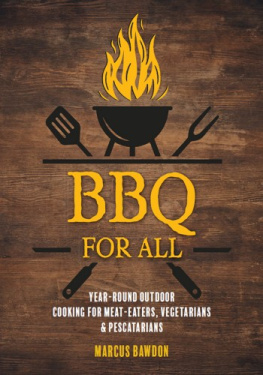
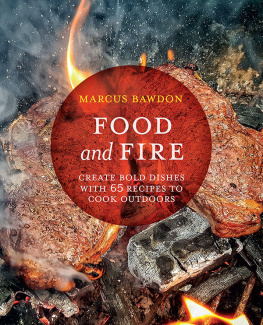
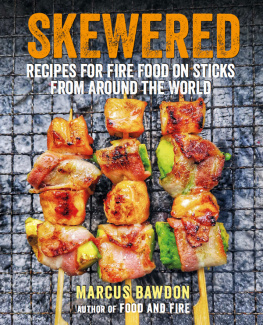

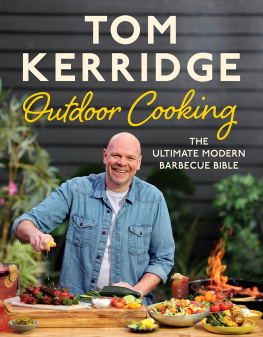
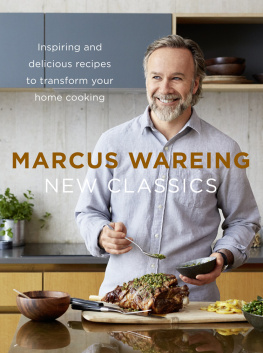

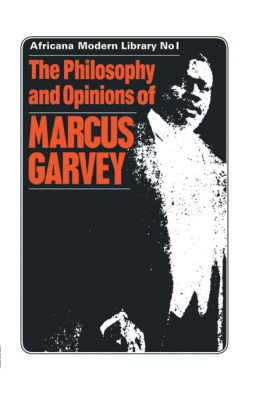


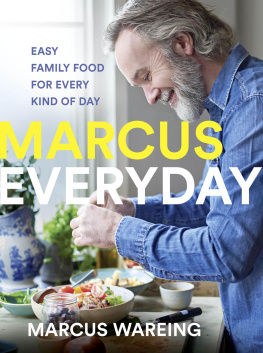
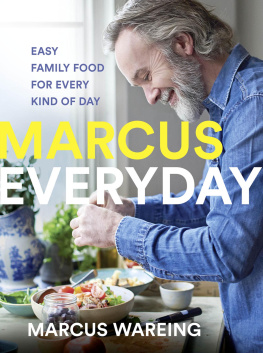

 BBQ FOR ALL year-round outdoor cooking for vegetarians, vegans, pescatarians & meat-eaters
BBQ FOR ALL year-round outdoor cooking for vegetarians, vegans, pescatarians & meat-eaters  marcus bawdon
marcus bawdon  Designer Geoff Borin Food Photography & Styling Marcus Bawdon Editor Kate Reeves-Brown Editorial Director Julia Charles Head of Production Patricia Harrington Art Director Sally Powell Creative Director Leslie Harrington Indexer Vanessa Bird Published in 2023 by Dog n Bone Books An imprint of Ryland Peters & Small Ltd
Designer Geoff Borin Food Photography & Styling Marcus Bawdon Editor Kate Reeves-Brown Editorial Director Julia Charles Head of Production Patricia Harrington Art Director Sally Powell Creative Director Leslie Harrington Indexer Vanessa Bird Published in 2023 by Dog n Bone Books An imprint of Ryland Peters & Small Ltd
 CONTENTS INTRODUCTION For me, everything tastes better cooked outdoors over fire...
CONTENTS INTRODUCTION For me, everything tastes better cooked outdoors over fire...